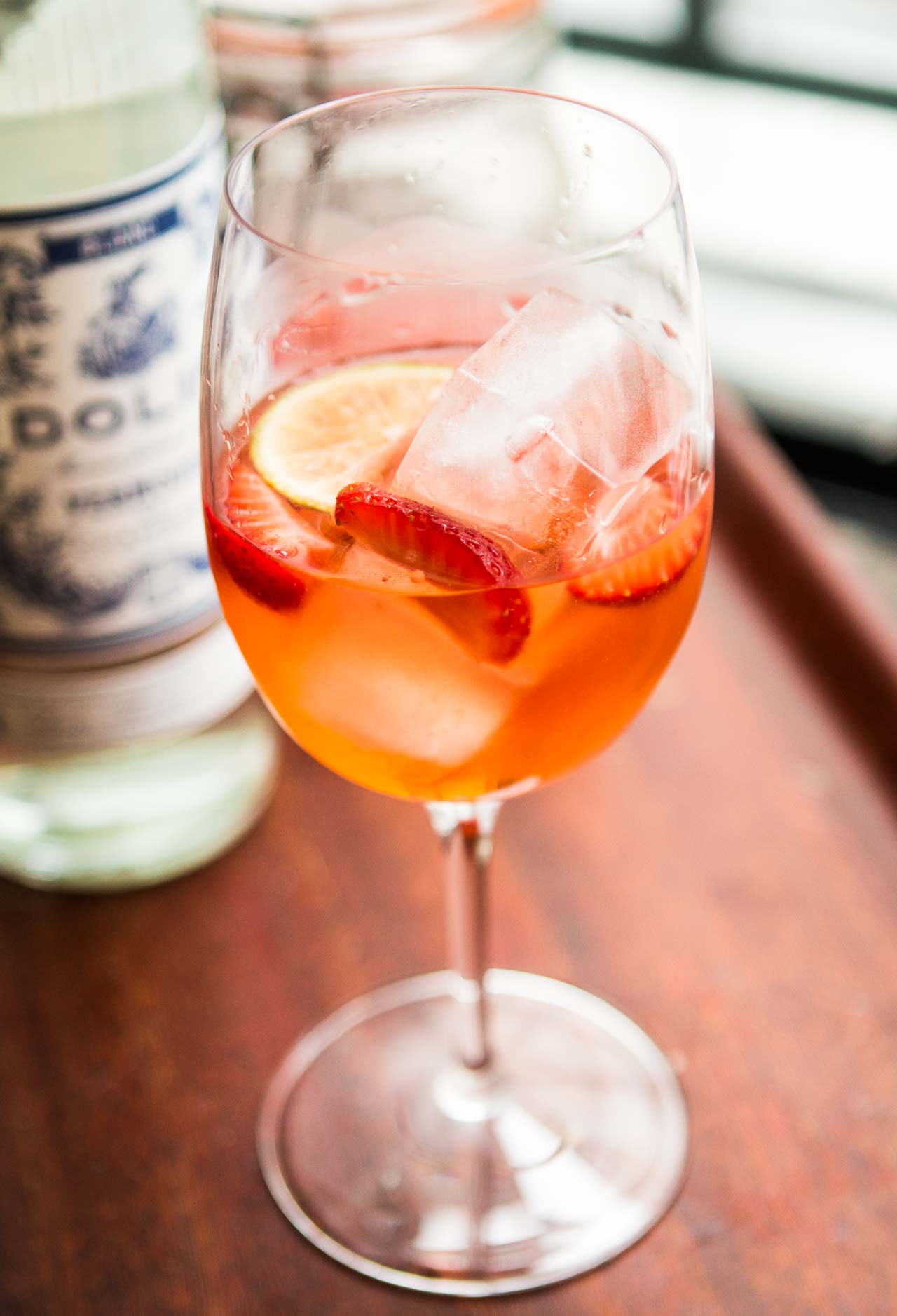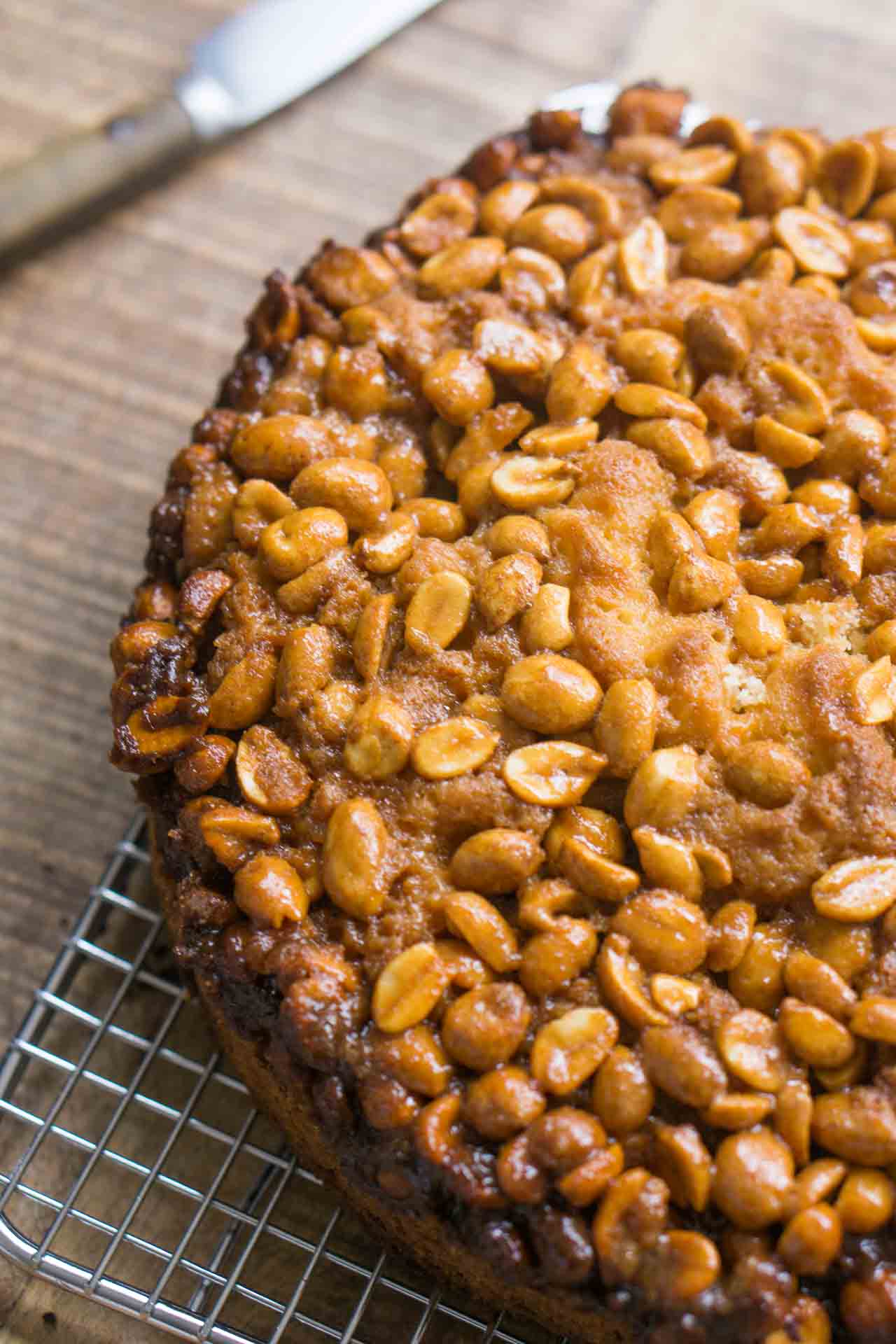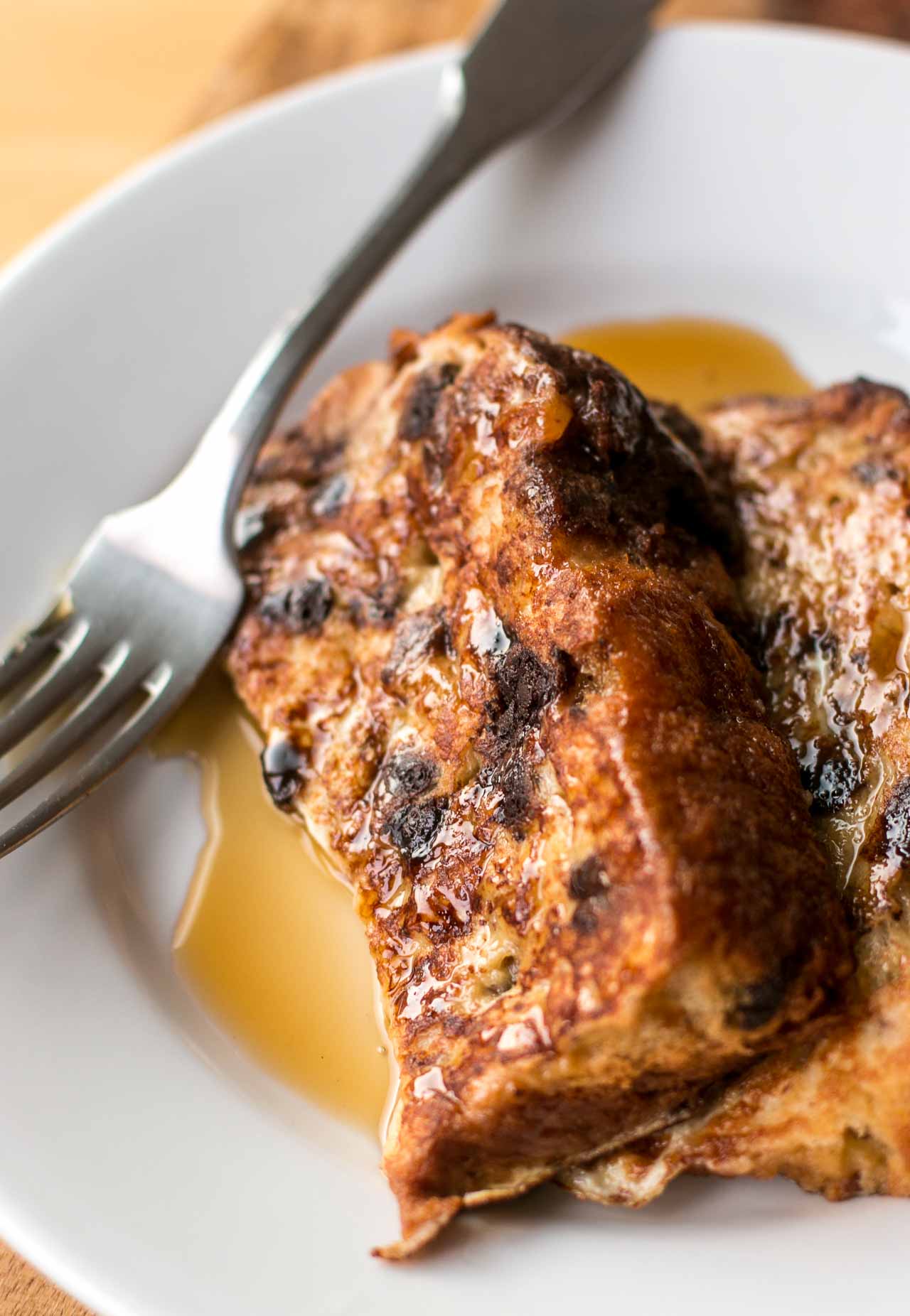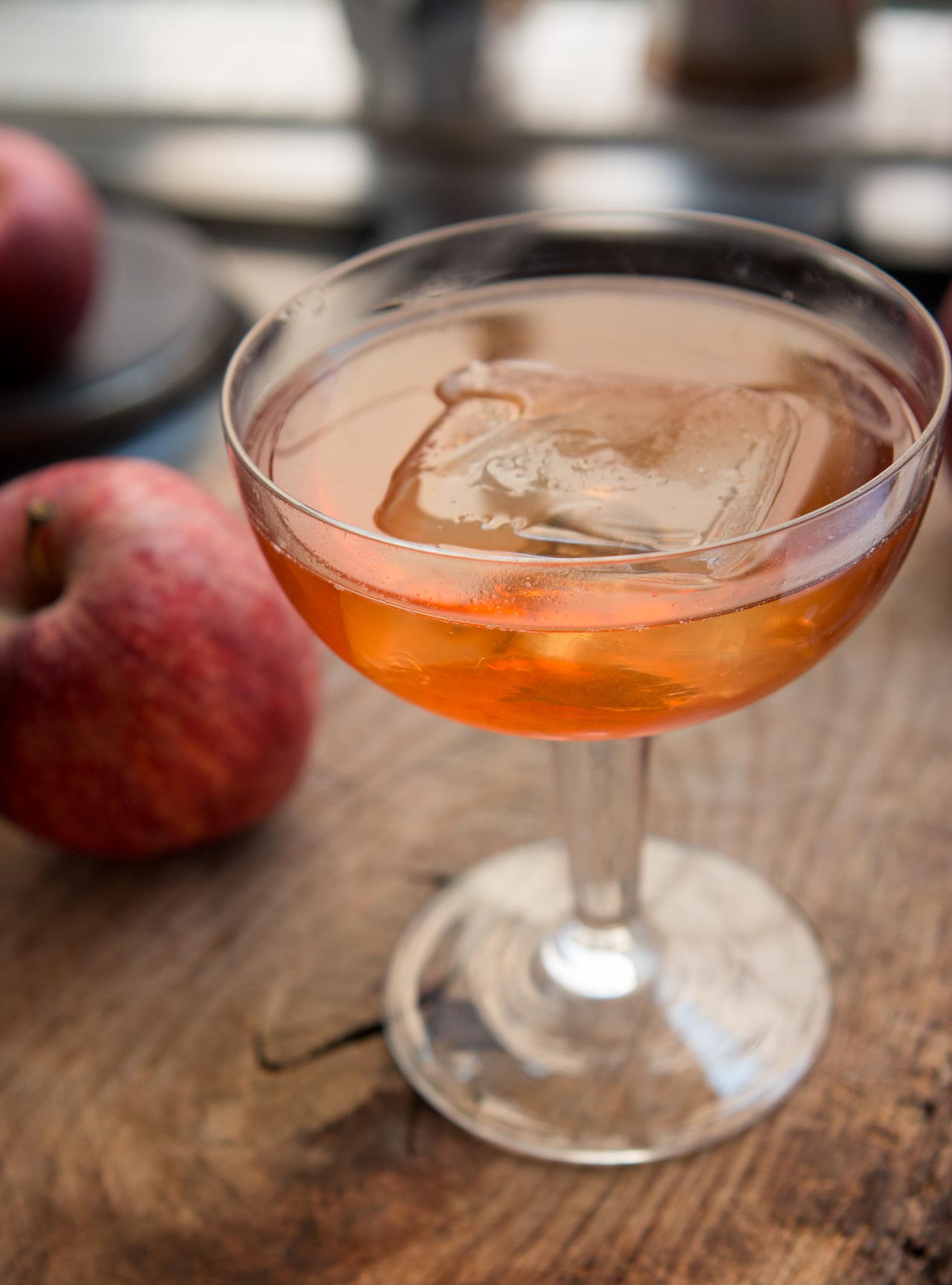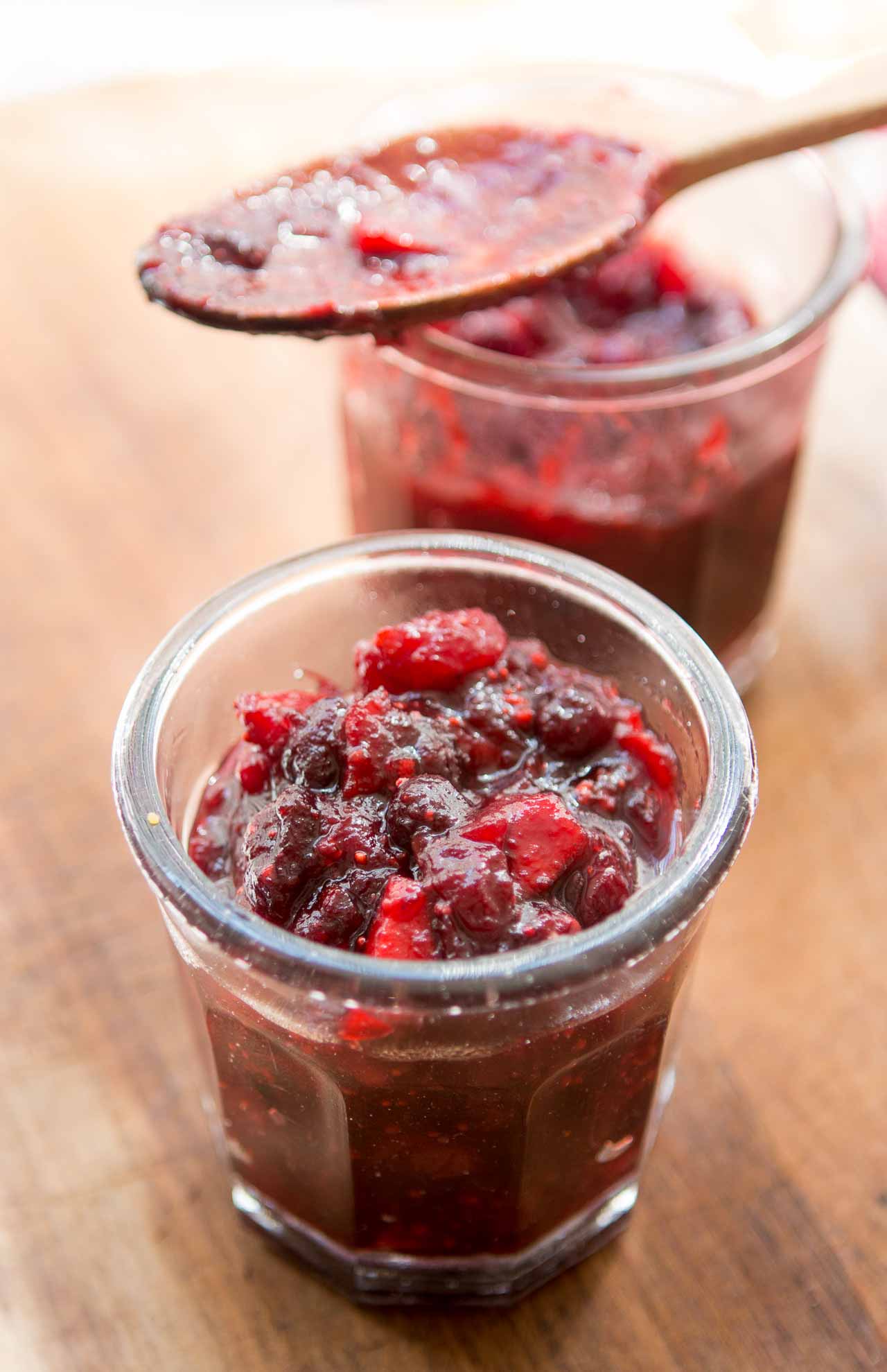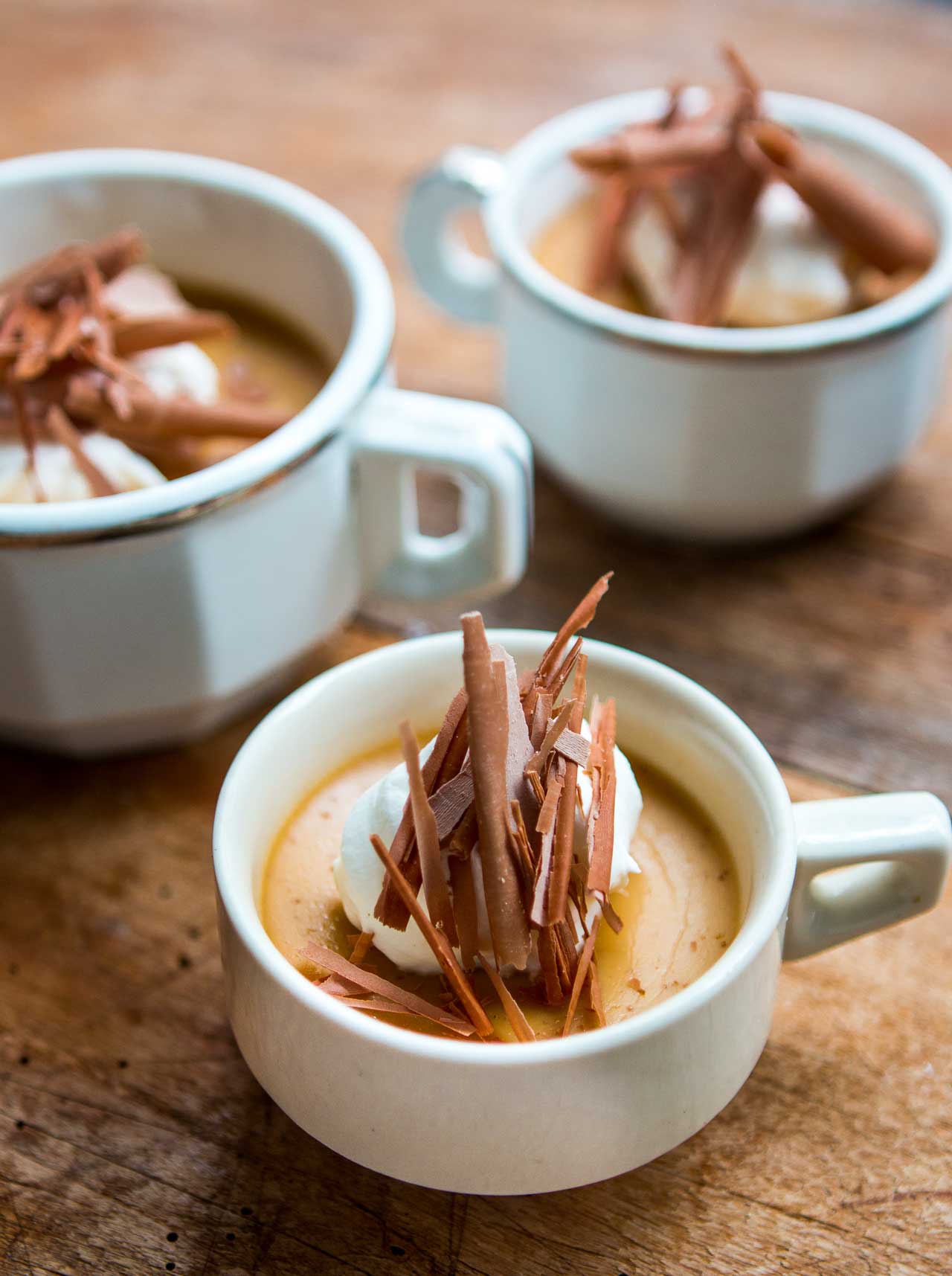10 Easy Ways To Improve Your Cooking
I woke up yesterday around 6am, and all I could think about was food.
Of course it was Thanksgiving, and there was so much to do. In spite of the strike, my friend David did manage to arrive just in time for dinner, a little sleep, and a early-morning trip to the outdoor market to load up on everything for a full day of cooking. And to explain to a lot of French people what Thanksgiving was all about.
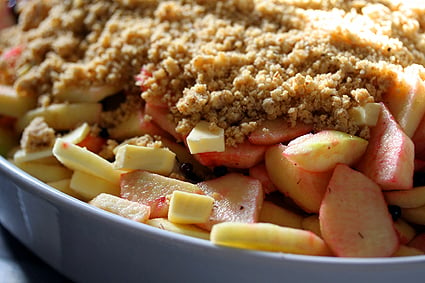
We bought every kind of root vegetable we could find. And l’autre David, who’s also a cook, insisted on roasting each one individually then combining them. I’m not sure that was necessary, but they were sure good since later on I happily ate my words. Our chestnut stuffing was another hit; French people don’t eat big mounds of stuffing but hardly a bit was leftover. But what’s not to like about buttery cubes of levain with roasted chestnuts, leeks, pruneaux d’Agen, and lots and lots of fresh sage and thyme?
It got me thinking about what makes a good cook since Thanksgiving food is some of the simplest fare there is.
Take mashed potatoes. There’s very few ingredients. But if you have good russet potatoes, terrific butter, fromage blanc, sea salt, and freshly-cracked white pepper, you really can’t go wrong. Indeed, one of the non-secrets of good cooking is to buy good ingredients and do as little to them as possible. You don’t need me to tell you a nice ripe peach tastes much better than a hard, out-of-season one. Or freshly-made mashed potatoes tastes better than those goofy flakes from the box.
I’ve been thinking about this a lot lately since Michael Ruhlman, whose just released a new book book Elements of Cooking, and who began a new blog as well—Elements of Cooking, got me thinking. In his words, he writes in his new blog…
“(it’s)…not a recipe blog–I’m interested in what doesn’t change, what can’t change, what is permanent, what is fundamental to the act of cooking. I am interested in not needing recipes.”
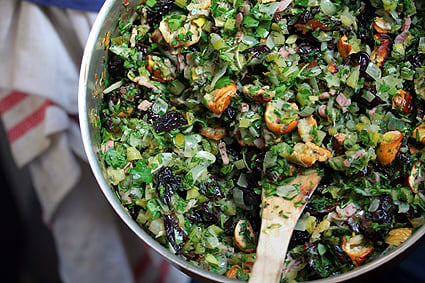
His superb treatise on why you should make your own stock is a must read, especially if you have holiday bird bones leftover. (I felt uncomfortable dragging a big, greasy turkey carcass across Paris on the way home last night. But this morning, I deeply-regretted it after reading his stock-making tips.)
One you understand how things work, many dishes are variable.
While baking does require recipes and exactitude (my personal cross to bear…) in many instances, we shouldn’t be slaves to recipes. If a recipe for a salad dressing calls for 1 teaspoon of salt and you don’t think it’s salty enough, do you just stick with the recipe or do you add more salt to taste?
Of course, you can’t simply add another cup of flour to a cake recipe, but you can learn more about your ingredients; how they work and what they do. Armed with that knowledge, you’ll won’t be so stressed about substituting ingredients, calculating baking times for your particular oven, and you’ll be able to use recipes as a jumping-off point instead of hard-and-fast rules.
And take it from one who knows all too well, you don’t need an arsenal of fancy equipment either.
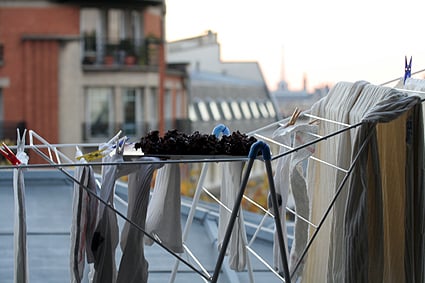
Since moving to France, even though I spent a lot of time cooking professionally, I learned a whole new vocabulary about cooking here. Because of the nature of shopping in Paris, where you spent time talking with shop owners and food vendors, you can learn a lot more about cooking than you can imagine if you’re willing to take the time. And because my kitchen is…shall we say—modest, at best…I’ve learned to work around any obstacles. And in fact, I can now multitask making chocolates while drying my socks. How’s that for good ‘ol American ingenuity?
Here’s 10 easy things you can do to improve your cooking. I’ve touched upon a few before and some apply to baking, some to savory cooking. They’re ways that I’ve personally improved my cooking and stocked my pantry, and all of these things are within the reach of everyone. They’re all pretty simply and actually kind of fun to implement, and I hope they’ll making cooking and baking far more enjoyable and rewarding for you, as they have for me.
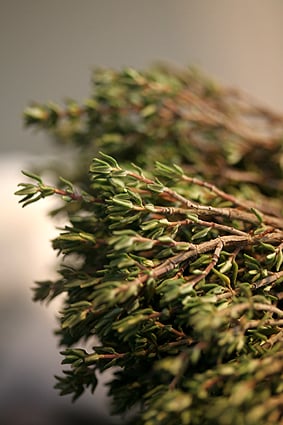
1. Use Fresh Herbs
You don’t need me to tell you that a humble baked potato is ever-so- much better with some freshly-chopped chives sprinkled over it. (And bacon and sour cream and butter too, mais oui!.) But people forget how delicious just-chopped thyme smells, or the scent of a chiffonade of fresh, leafy basil strewn over a platter of tomatoes and oily-black olives turns it into something fragrant and marvelous.
In France, fresh herbs are relatively cheap. But no matter where you live, a big bunch of flat-leaf parsley or sprigs of thyme are a great investment since a little fistful will bring food alive. I grew my own on the roof, until I noticed one day a family of pigeons was using the pot to take their afternoon nap in, so I stopped. Fortunately they don’t seem to be as fond of chocolate as I am.
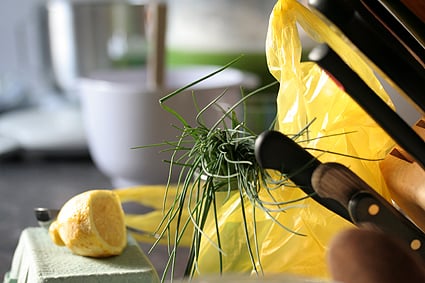
The bunch of chives I bought for 1€ for the Salmon Rillettes the other day enlivened five other dinners and salads; such a deal! Experiment with new and unfamiliar herbs, like pungent tarragon or tender, anise-like chervil leaves, which really is one of the great, underutilized, herbs.
UPDATE: In the comments, someone inquired about extending the life of fresh herbs. A new device just came out, which the San Francisco Chronicle testers used…and the results?
“Well, we were blown away. After nearly three weeks in the Herb Savor, our sage and parsley looked fresh as a daisy, while the same stuff—one bundled in the wet towel and the other stored in a glass of water—was wilted, dry and brown.”
I’m going to get one to use myself and see how it works.

2. Upgrade Your Oil
Please people, for all that is good in the world, it’s okay to spend a little extra money on nice olive oil on yourself, for something that you’re going to parsimoniously drizzle over your food. For cooking and frying, it’s fine to use a less-expensive olive oil. But it wasn’t until I moved above a huilierie, an olive oil store, that I started buying better oils made from various kinds of olives and blends. Quelle difference, my friends.
Don’t be concerned with fancy labels or super high-prices. Good oil isn’t necessarily expensive; the two bottles I’m using right now, one cost 5€ and the other 12€ each is going to last me a couple of months. Tasting is really important, not necessarily the label or origin. As they say, “Buy your oil where the Italians get theirs—in Spain“, which alludes to the widely-held belief that much of the olive oil that’s marketed as Italian is actually shipped over from Spain, whose oil is often less-expensive and sometimes better.
Nut oils are great, if they’re of good-quality. A spoonful along with a sprinkle of coarse salt will dress an entire salad. What could be easier, or more economical?
If there isn’t a shop near you locally, a good source for good oils that ships is Zingerman’s.
Their site is a wealth of information too.
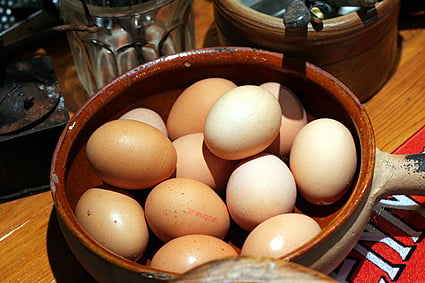
3. Use shallots. Lots and lots of shallots.
In France, almost everyone uses shallots. But in America, you have to kneel down under the shelves at the produce aisle and fish out those little bags covered with red plastic netting to grab one.
Oh, the humiliation!
I never understood the sheer brilliance of shallots until now. They’re like oxygen to a cook; you can’t live without them once you’ve had your first taste. Finely-chopped and raw, they find their way into every vinaigrette I make. I also sauté zucchini or another favorite vegetable with them. Shallots are a must have and once you use them, you’ll find them irreplaceable in your kitchen.
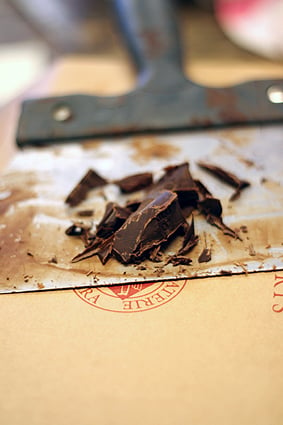
4. Keep a good amount of decent bittersweet or semisweet chocolate on hand.
Not only is this good for snacking (guilty!), but like that Little Black Dress, some good chocolate can be chopped up and made into a instant chocolate sauce mixed with milk or water and used to drizzle over any dessert. Or a quick batch of mousse au chocolat.

And that great stand-by, a batch of brownies, can be whipped up with ingredients you already should have on hand; flour, sugar, butter and eggs if you have chocolate. And there’s my simple, four-ingredient Chocolate Orbit Cake, too. Good dark chocolate lasts for years if stored correctly, and buying it in bulk is more economical if that’s a concern.
5. Salt
One of those kind and gentle folks at one of those not so kind and gentle online food sites criticized me for saying that fleur de sel is the “greatest salt on earth”. I’m not sure why, but I hope that person is condemned to a lifetime of eating bitter, acrid table salt with anti-caking agents.
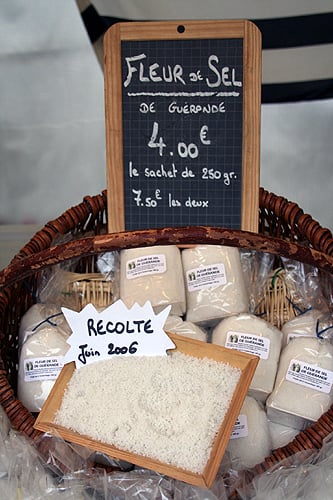
While I love fleur de sel de Guérande, it’s pricey if you don’t live in France. But anyone can buy good salt no matter where they live or what their budget. A huge box of kosher salt is…what, a couple of bucks? And how long is that going to last? Seriously, if you’re eating that much salt, you shouldn’t be. Go get yourself a box—it’ll last you years.
6. Try Lentilles de Puy
This is my stand-by dish that I make whenever I don’t know what to make that’s quick and versatile. But unlike those mud-brown lentils that get made into a murky winter soup, lentilles de Puy cook up crunchy and nutty, and don’t fall apart unless you really cook the heck out of them.
Lentilles de Puy are grown in a region with rich, volcanic soil, which gives them a pleasant, mineral-y taste because they’re dried on the plant. They cook in less than 30-minutes, and can be tossed in a simple dressing of oil and vinegar with some salt and pepper, or cooled them mixed with tomatoes and crumbled feta cheese. I’ve written about them before, but am adding them here since to me, they’re a ‘must-have-on-hand’ in any kitchen.
They’ve become readily available in the US and elsewhere, but look for ‘de Puy’ on the label for the best-quality green lentils, which really do taste better.
7. Re-think Your Vinegar
Since you’re upgrading your oil, why not your vinegar at the same time? In France, sherry vinegar’s quite popular, which is what I reach for 98% of the time since it’s milder and less-tangy than red wine vinegar. I don’t use what’s labeled balsamic vinegar anymore since my visit to Modena, where the real stuff is made, and I’m horribly spoiled. You’d be too if you had one sip of the real stuff. It’s terrible, since I’m now ruined for life.
A small splash of vinegar is usually all that’s used, so why not use good stuff? And if you really want to use that other balsamic vinegar, it’s fine. I won’t tell.
8. Try Whole Wheat Pasta
I am crazy for whole-wheat pasta. Erase any memories you have of grainy, leaden tubes of starch and taste some of the new varieties out there. I don’t know if it’s available in the US, but Barilla is now making their own. And I’m a big, big fan of Latini farro pasta, which is made of faro, and I bring some back when I go to Italy. But it’s admittedly pricey and you can do fine in your local natural-foods store, as I do.
My very favorite quick and easy dinner is whole wheat pasta, sun-dried tomatoes, red chili flakes, chopped sausage, some greens tossed in all topped with crumbled feta. And a little drizzle of olive oil, of course.
9. Wine
“Hey, it’s two-buck Chuck! Ha-ha-ha…!”
I haven’t been able to figure out why people are willing to pay more for a latte than on wine? It was no accident that I moved to a country where daily drinking-wine is pretty inexpensive. But there’s plenty of decent wines around that come in at less than $10 a bottle which are very drinkable. That $2 stuff is really awful, and I’m not sure I understand why people bragging about how little they’re willing to spend on themselves.

Look around at good retailers like Best Cellars or searching a few wine blogs, where you can discover wines under $20 or even $10. You don’t need to drink expensive wine to enjoy wine. I don’t buy fancy wines, and you don’t have to go into debt to enjoy wine either.

Another option is to buy by the case if a discount is offered. And price isn’t always an indication of quality; drink what tastes good to you.
10. Get thee some decent cookware.
Yes, good cookware is more expensive than the flimsy stuff. But who liked charred cookies or spending hours scrubbing burnt spots off saucepans?
One does not need a complete batterie de cuisine to cook; a medium-sized saucepan, a large non-stick skillet, a spatula or wooden spoon and a good, solid baking sheet are sufficient for most tasks. Many of the top brands now offer lesser-priced models if you’re really tight, but I’ve had the same All-Clad pans for over twenty years and I still use them every day. And it has a lifetime warranty which means no matter what, they’ll replace it forever. I’ve even spectacularly dropped mine and it fared beautifully, far better than the chocolate in it.
In a solid saucepan, with thick sides, things are less-likely to burn, handles won’t get hot, and things will cook evenly. Similarly, if you’ve ever baked cookies on one of those tissue-thin baking sheets, you know how frustrating it is to pull out a batch of cookies that are blackened on the bottom and raw on top.
Last time I was in the US, my pal Wendy dragged me to Marshall’s—okay…she didn’t have to drag me—nd I was stunned to find so much high-quality cookware so reasonably prices. Oxo tools, KitchenAid pans, and Le Creuset casseroles were on offer. It wasn’t like a cookware store where they have absolutely everything, but I did a little bit of damage. (Although the clothes were a bust..who wears all those pants that have a 52″ waist and 28″ inseam?)
Or scan garage sales. I’ve sold lots of great pastry-making tools at mine when I moved abroad, thinking I’d never use them again. (Ha! Which, of course, I had to buy all over again.)
Happy cooking!








